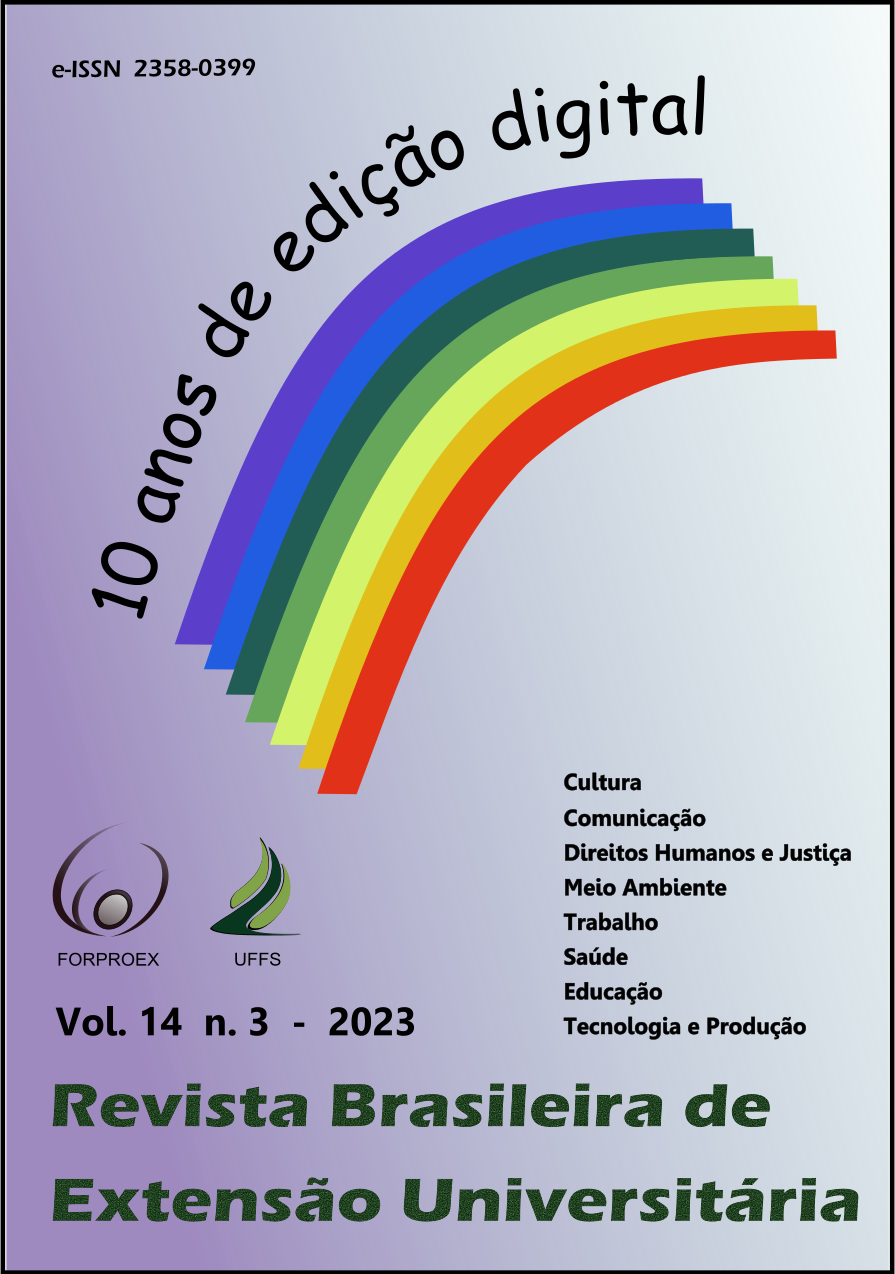Prevenção da Covid-19 pelo diagnóstico molecular de Sars-CoV-2: Um relato de experiência
DOI:
https://doi.org/10.29327/2303474.14.3-14Palavras-chave:
Saúde Coletiva, Pandemia, VirosesResumo
A partir do surgimento da pandemia do novo coronavírus (Covid-19), houve a necessidade de realizar o diagnóstico molecular por meio da Reação em Cadeia da Polimerase antecedida de transcrição reversa (RT-qPCR) em tempo real, padrão ouro para sua identificação. A Extensão Universitária remete ao desenvolvimento de ações para uma relação transformadora entre Universidade e Sociedade. Este trabalho objetiva realizar um relato de experiência acerca da criação do Laboratório de Diagnóstico Molecular da Covid-19 (LabCoV), doença causada pelo SARS-CoV-2, ampliando o acesso ao diagnóstico e contribuindo para a saúde coletiva. O LabCoV integra a rede baiana de vigilância molecular das viroses emergentes e reemergentes, e está habilitado pelo LACEN/BA a receber amostras clínicas utilizando o sistema Gerenciador de Ambiente Laboratorial (GAL) do Sistema Único de Saúde, de profissionais de saúde dos municípios e trabalhadores da saúde em geral, suspeitos ou contactantes. Nesse sentido, um grupo multiprofissional, buscando assumir seu compromisso e responsabilidade social, viabilizou a implantação do LabCoV, por meio de editais públicos. O LabCoV proporcionou o atendimento a alguns municípios dos territórios do Recôncavo, Portal do Sertão e Vale do Jiquiriçá da Bahia, e auxiliou os gestores municipais por meio do diagnóstico precoce, minimizando os surtos no ambiente de trabalho dos profissionais de saúde. Além disso, foram realizadas ações que pudessem contribuir para a troca de conhecimentos, por meio da realização de atividades formativas/educativas sobre a temática, estabelecendo uma rede de compartilhamento de saberes e experiências com cientistas e membros da sociedade.
Palavras-chave: Saúde Coletiva; Pandemia; Viroses
Covid-19 prevention through molecular diagnosis of Sars-CoV-2: an experience report
Abstract: With the emergence of the new coronavirus (Covid-19) pandemic, there was a need to carry out molecular diagnostics using real-time polymerase chain reaction preceded by reverse transcription (RT-qPCR), the gold standard for its identification. University Extension involves the development of actions for a transformative relationship between University and Society. The aim of this work is to report on the experience of setting up the Laboratory for the Molecular Diagnosis of Covid-19 (LabCoV), a disease caused by SARS-CoV-2, expanding access to diagnosis and contributing to public health. LabCoV is part of the Bahian network for the molecular surveillance of emerging and re-emerging viruses, and is authorized by LACEN/BA to receive clinical samples using the Unified Health System's Laboratory Environment Manager (GAL) system, from health professionals in the municipalities and health workers in general, whether suspected or in contact. In this sense, a multi-professional group, seeking to assume its commitment and social responsibility, made the implementation of LabCoV possible through public calls for proposals. The LabCoV provided services to some municipalities in the Recôncavo, Portal do Sertão and Vale do Jiquiriçá territories of Bahia, and helped municipal managers through early diagnosis, minimizing outbreaks in the work environment of health professionals. In addition, actions were carried out that could contribute to the exchange of knowledge, by carrying out training/educational activities on the subject, establishing a network for sharing knowledge and experiences with scientists and members of society.
Keywords: Public Health; Pandemic; Viruses
Downloads
Downloads
Publicado
Edição
Seção
Licença
Autores que publicam nesta revista concordam com os seguintes termos:
- Autores mantém os direitos autorais e concedem à revista o direito de primeira publicação, com o trabalho simultaneamente licenciado sob a Creative Commons Attribution 4.0 que permite o compartilhamento do trabalho com reconhecimento da autoria e publicação inicial nesta revista.
- Autores têm autorização para assumir contratos adicionais separadamente, para distribuição não-exclusiva da versão do trabalho publicada nesta revista (ex.: publicar em repositório institucional ou como capítulo de livro), com reconhecimento de autoria e publicação inicial nesta revista
- Autores têm permissão de distribuir seu trabalho online (ex.: em repositórios institucionais ou na sua página pessoal) a qualquer ponto antes ou durante o processo editorial, já que isso pode gerar alterações produtivas, bem como aumentar o impacto e a citação do trabalho publicado (Veja O Efeito do Acesso Livre).




